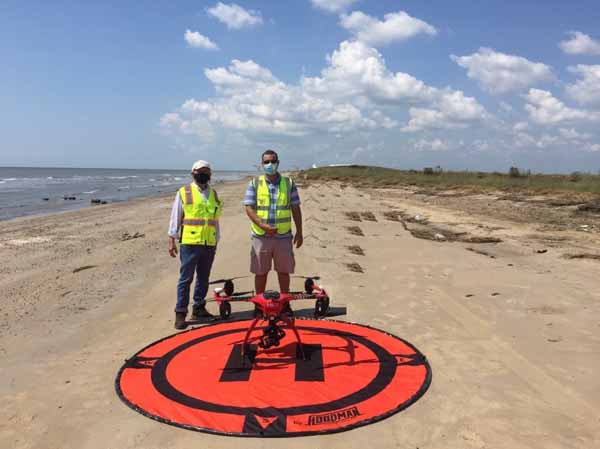Lamar University announces master’s degree in geospatial sciences
Beginning in the spring of 2021, Lamar University’s Department of Earth Space Science and Lamar University Geospatial Center will offer a Master of Science degree in geospatial sciences. The program will include a 30-credit hour thesis-based option or a 36-credit hour non-thesis option and is designed to train individuals to work in any sector of geospatial sciences.

“The M.S. degree will provide education in all the key areas of geospatial technologies most relevant to the contemporary workplace, including computer-based geographic information systems, remote sensing techniques, drone technology, digital image processing, spatial analysis and modeling, global positioning systems and data science in the big data era,” said Dr. Reda Amer, assistant professor and director of Lamar University Geospatial Center and director of GIS Programs. “Students will gain a combination of technical training, critical thinking skills and the ethical framework necessary to be effective geospatial analysts in any sector of the field. Students will be given substantial practical experience in the application of state-of-the- art geospatial-based systems to a wide range of real-world applications,” said Amer.
Demand for well-trained geospatial professionals is growing much faster than supply. Trained individuals are needed at multiple levels from certified entry-level technicians to mid-level master's graduate and research scientists. The field of geospatial sciences supports decision making in a variety of fields such as physical and environmental sciences, geology, natural resources, agriculture, urban planning and management, political science, civil engineering, economy, business, real estate, education administration, health care, urban flooding and emergency response, coastal restoration and management.
According to the U.S. Department of Labor's Bureau of Labor Statistics, jobs in the field of the geospatial disciplines are expected to grow nationally by approximately 19% between 2016 and 2026. It is estimated that geospatial sciences occupations are expected to grow in Texas by approximately 28.3% between 2016 and 2026. The long-term occupational projections (2016-2026) in southeast Texas are expected to grow by approximately 21.7%. Potential career options with a master’s degree in geospatial sciences include GIS analyst, cartographer, remote sensing analyst, drone photogrammetrist, environmental scientist, urban/regional planner, health geographer, GIS administrator, GIS developer and GIS project manager. According to the U.S. Department of Labor 2018 statistics, Texas is one of the states with the most GIS job demand. Moreover, southeast Texas offers one of the highest annual mean wages of cartographers and photogrammetrists at $75,230 - $103,710.
“The master’s program in geospatial sciences addresses the immediate and growing need to train a workforce for the rapidly expanding local geospatial industry in Texas,’ said Amer, who has worked in GIS since 2000 and formerly developed a GIS certificate program at Lamar University. “Graduates of this program will be able to convey to potential employers the comprehensiveness of their training at Lamar University and readiness to implement their knowledge obtained during the program through research projects and in the classroom, which is often not self-evident in the job application and interview process,” said Amer.
The master’s program in geospatial sciences is open to all students in all disciplines and will be delivered through a combination of face-to-face and distance education instruction. Students who wish to pursue a master’s degree in geospatial sciences at Lamar University must have a bachelor’s degree from an accredited institution and must meet the admission standards of the College of Graduate Studies.
Learn more about the program. Contact Dr. Reda Amer.